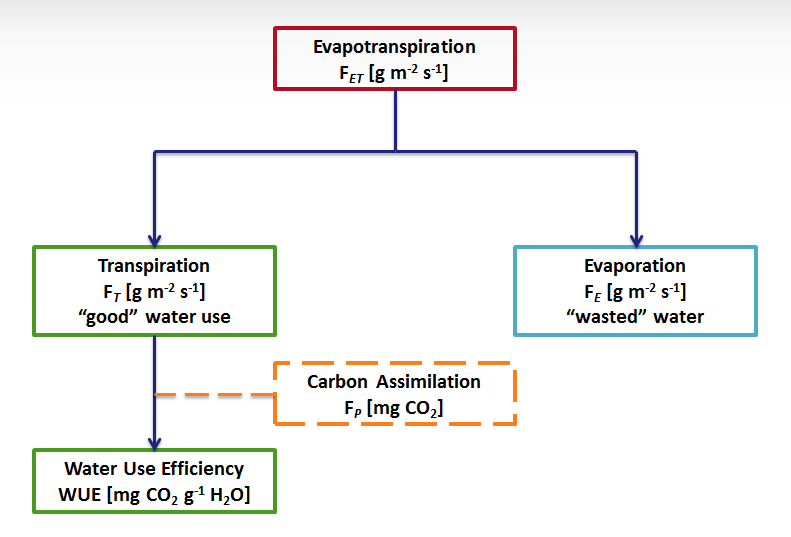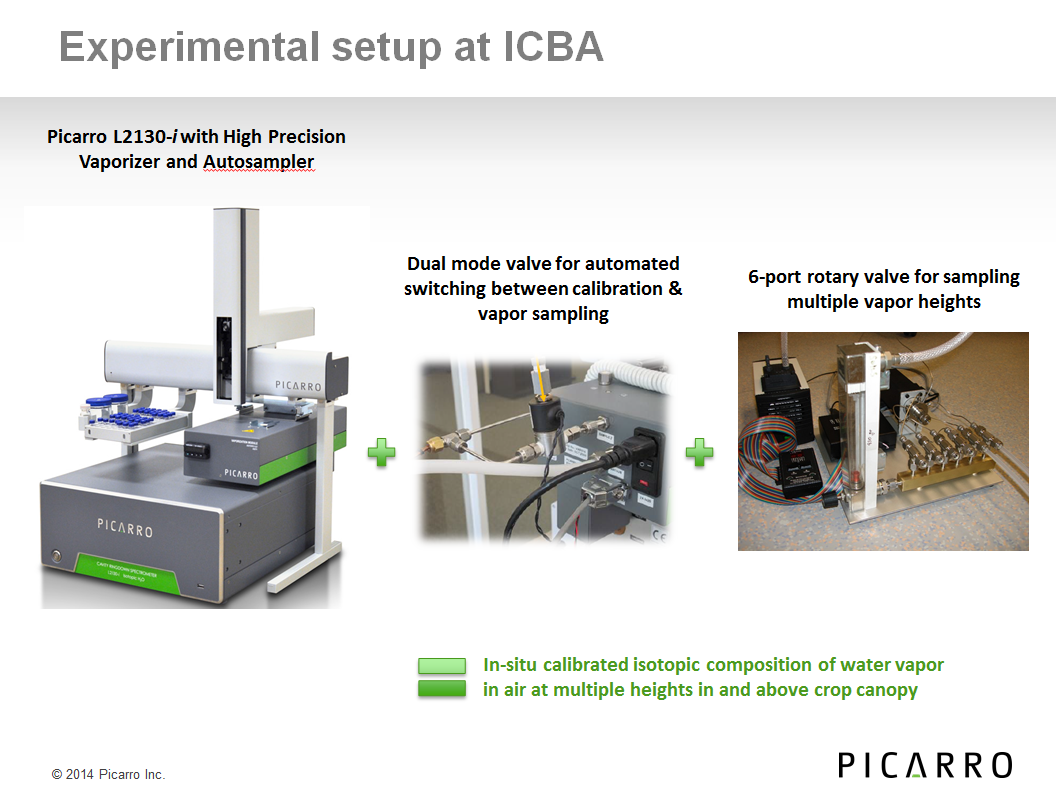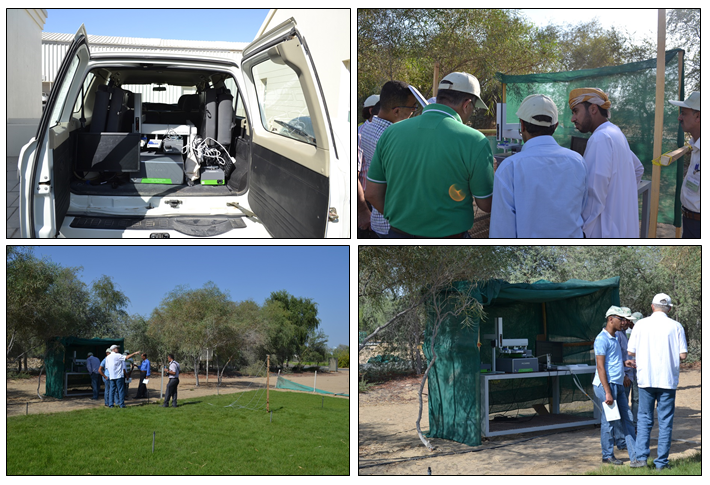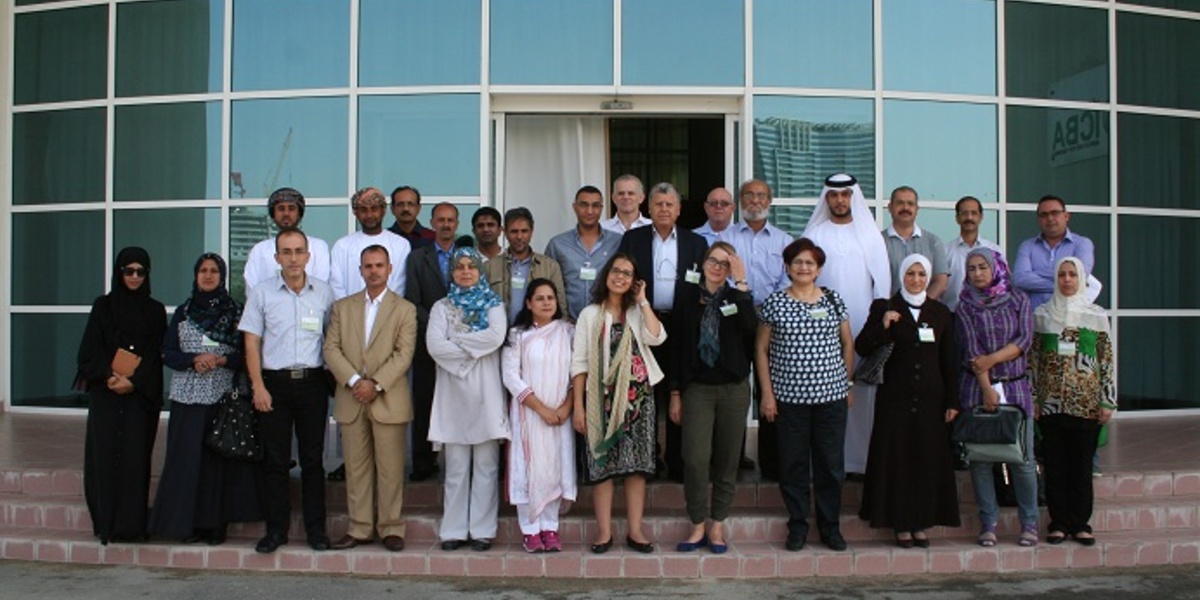I just returned from a week-long trip to Dubai where I was fortunate to participate in and help lead an International Atomic Energy Agency Regional Training Course on “Separating evapotranspiration (ET) into evaporation (E) and transpiration (T) using isotopic and conventional techniques”. The five day technical course gathered about 15 scientists from across the Middle East region to learn about the importance of understand water use efficiency in agriculture, and in particular how to use stable isotopes of water to partition water loss from crops into “good” water loss (transpiration) and “bad” water loss (evaporation). You can imagine how important this is in the arid, desert regions of the Middle East where water scarcity is particularly prevalent and much of the irrigation of agriculture in the region is done using marginal waters, such as salt water and waste water.

During the workshop, I worked closely with Leo Mayr who recently retired from IAEA in Vienna where he spent 30+ years working on the IAEA/FAO Joint Program on Soil and Water Management. Leo has extensive experience in stable isotopes and between the two of us we were able to put together a great lecture-based and practical workshop on using water isotopes for agriculture water use efficiency studies. In addition, two scientists from ICBA, Dr. Makram Belhaj Fraj and Dr. Ian McCann, gave a series of lectures on using conventional techniques, such as sap flow meters, to study transpiration rates, and crop models to predict how changing water resources will affect crop yield and agriculture decision-making in the years to come.
One of the key components of the workshop was a 48-hour field deployment of a Picarro L2130-i for measuring water isotopes (δ18O and δD) in ambient vapor. We configured the system with a High Precision Vaporizer, Picarro Autosampler and Dual Mode valve to enable automated calibration of the system with switching to ambient measurements. In addition, a 6-port rotary valve was used to sample ambient vapor at different heights above the crop canopy (a grass, in this case).

Stable isotopes of water can be used to partition evapotranspiration into evaporation and transpiration by measuring δ18O or δD (or both) of the mixed signal, along with the two end-members. In the field you can do this using a Keeling mixing line plot to determine δET (the isotopic composition of ET), a leaf chamber to determine δT (the isotopic composition of T) and soil water measurements combined with a theoretical model of isotope fractionation during evaporation (modified Craig-Gordon model) to determine δE (the isotopic composition of T). Then, a simple mass balance isotope model enables you to derive the fraction of ET that is T (fT/ET):

[Stay tuned for an upcoming Application Note with a detailed review of the theory along with example data from Dubai.]
Picarro’s Cavity Ring-Down Spectroscopy technology and our isotopic water analyzers are particularly well-suited to this application. The Picarro L2130-i can easily and automatically switch between calibration using liquid waters, and ambient vapor measurements. In addition, improvements in the delta dependence on water vapor concentration means that although concentration dependence testing and calibration is still recommended, it is stable through time and there is a lower dependence than previous generation analyzers (e.g., the L2120-i or 1000-series liquid water analyzers). In addition, the system is readily deployed in the field assuming there is line power available (even, if there isn’t there are savvy scientists out there who use solar panels and battery packs to power their Picarro). With a team of non-experts, we were able to move the system from the lab to the field and have it making measurements in less than two hours.

I hope that Picarro’s contribution to the workshop was helpful and informative for the group. I certainly enjoyed meeting everyone and learning more about the challenges of water use management in agriculture in the Middle East!
To learn more about using water isotopes to separate ET (or to share your experiences in this application), please contact me at kdennis@picarro.com. In addition, watch for an upcoming Application Note on using stable isotopes of water for ET studies, including a write-up of data from this field trial.
